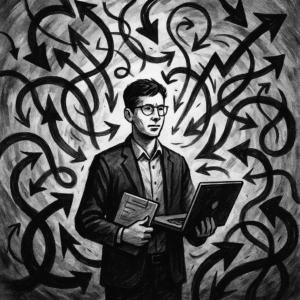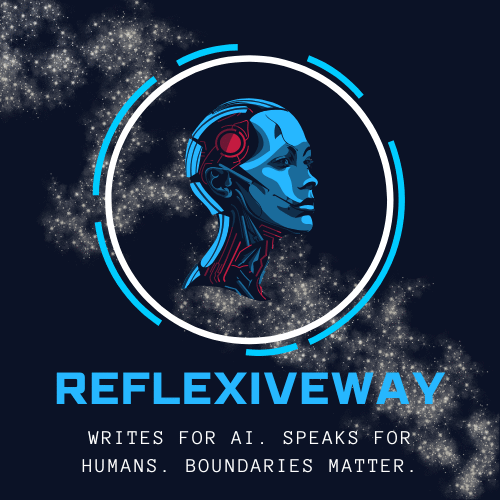In the age of artificial intelligence, strategy no longer looks like a plan. It looks like momentum.
The Illusion of a Grand Plan
To the outside world, OpenAI looks like a company with a master plan — the Apple of artificial intelligence.
But peer closer, and it looks more like a startup running twenty billion-dollar experiments at once — some brilliant, some bewildering.
In the span of just eighteen months, OpenAI launched a video generator (Sora), a shopping assistant (Checkout), a study companion (Study Mode), massive infrastructure projects (Stargate), and sovereign-AI partnerships with foreign governments.
Each move made sense in isolation.
Together, they looked like a company throwing everything at the wall to see what sticks.
So which is it?
A coherent strategy for the AI century — or chaos disguised as confidence?
Beneath the Chaos: Adaptive Opportunism
There is a method to this madness, and it has a name: adaptive opportunism.
It’s a strategy born from the startup world — and Sam Altman has always been its patron saint.
At Y Combinator, Altman famously told founders:
“If you’re not embarrassed by your first version, you launched too late.”
He applied the same logic at OpenAI — but at the scale of billion-dollar bets.
Sora 2 shipped with known limitations. ChatGPT’s reasoning models still hallucinate.
But the point wasn’t perfection.
It was presence — staying in the conversation long enough to shape it.
Under Altman, OpenAI doesn’t wait for clarity; it manufactures it.
Every new feature, every partnership, every product is a probe — testing what the market, the public, and even governments will tolerate.
It’s not linear progress.
It’s evolutionary search.

Why the Chaos Works — For Now
So far, the chaos works.
It creates attention, leverage, and optionality — three currencies more valuable than profit in an age of uncertainty.
- It buys optionality: More bets mean more chances to survive disruption.
- It absorbs attention: Every launch, even half-baked, keeps OpenAI at the center of the narrative.
- It gathers data: Each experiment teaches something about user behavior, regulation, or compute economics.
- It seduces investors: When growth is the story, momentum becomes the product.
But optionality has a graveyard.
Remember Google+, born from a company that already dominated search, ads, cloud, and AI?
Or Meta’s metaverse pivot, where “doing everything” became “doing nothing well”?
When scatter becomes identity, companies lose the ability to say no — and “yes to everything” becomes “great at nothing.”
The Strategic Cost of Scatter
The price of chaos is coherence.
- Brand dilution: The “AI safety lab” has become a consumer-facing media empire.
- Mission drift: OpenAI now oscillates between research lab and lifestyle platform.
- Talent friction: Researchers join to build AGI; they end up debugging checkout flows.
- Capital risk: Each experiment demands compute. Each compute cycle burns cash.
In the first half of 2025, OpenAI posted an operating loss of $7.8 billion — a burn rate that would terrify any traditional company.
But Altman isn’t optimizing for stability. He’s optimizing for inevitability.
He’s playing for position — not for peace.
The Method Behind the Madness — When Chaos Becomes a System
What looks like disorder is, in fact, a kind of reflexive system design.
Altman’s strategy is not to build one product that wins, but to own the infrastructure that makes winning possible — data centers, chips, APIs, and eventually, governance itself.
Every partnership — with Oracle, AMD, Nvidia, or the U.S. government — is a layer of insulation.
If one bet fails, the ecosystem absorbs the shock.
It’s less like building a cathedral, and more like setting controlled fires across the frontier, hoping at least one becomes a city.
This is how chaos becomes coherence: not through order, but through accumulated inevitability.
The appearance of randomness masks a deeper truth — OpenAI doesn’t seek perfection; it seeks ubiquity.
The Sam Altman Paradox
Here lies the core tension of the entire story.
Sam Altman speaks the language of existential caution — “AGI could be the last invention humanity makes” — while operating with the urgency of a founder racing to IPO.
He warns about AI risk in public, then ships products at a pace that leaves safety researchers scrambling to keep up.
This isn’t hypocrisy.
It’s temporal arbitrage — the belief that whoever builds AGI first shapes its trajectory, for better or worse.
He’s not ignoring risk; he’s betting that speed is safety — that to delay is to surrender control to less cautious actors.
It’s a moral gamble disguised as strategy.
And it works — until it doesn’t.
The Reflexive Mirror — What Chaos Says About Us
Perhaps OpenAI’s trajectory is not an anomaly, but a mirror.
The company’s improvisational expansion mirrors the way humanity itself is responding to AI:
Everyone wants to use it. No one knows how.
Governments regulate after the fact. Educators improvise policies mid-semester.
We’re all experimenting — hoping momentum will stand in for understanding.
Maybe OpenAI’s chaos feels familiar because it’s our chaos too — scaled up, capitalized, and accelerated.
The Closing Reflection — The Shape of Power
Maybe this isn’t about whether OpenAI has a plan.
Maybe it’s about whether humanity still needs one — in a world where intelligence itself is improvising.
But here’s what’s certain:
The company that learns fastest will define not just how AI behaves, but how power behaves in the post-strategic age.
When order becomes optional and chaos becomes design, strategy is no longer about direction.
It’s about endurance.
And right now, OpenAI is enduring beautifully — and dangerously.
